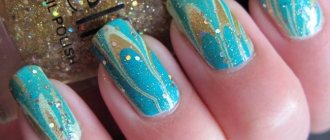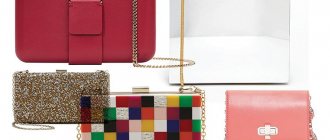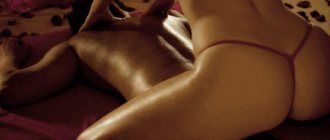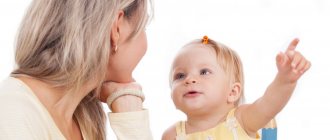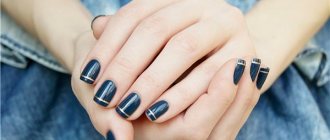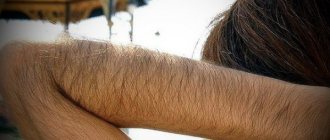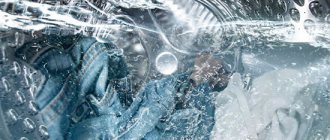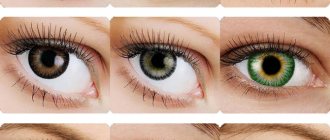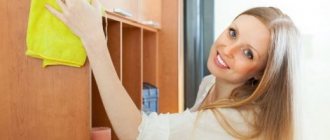LiveInternetLiveInternet
Master class TECHNIQUE “TERRA” Part two.
Thank you very much Babo4kanayablo4ke. I quote.
The first part can be found here
Five homemade plaster and putty boards are reinforced with cotton fabric, decorated on both sides and connected to each other in a box with a leather cord. Box size 20cmx15cmx15cm. Materials: building gypsum, water-dispersion putty, black acrylic paint, dark silver, light silver, white, burlap, inflorescences and leaves of astilbe, sedge, chrysanthemums, hydrangeas; clematis boxes, hazelnut, ornamental sedge roots, melon seeds, elements of a Vietnamese curtain (apparently bamboo), semolina, dragonflies and butterflies (decorative elements on a self-adhesive basis), birds. (Part II). First my brain started boiling!!! Because we had to figure out how to fasten the boards together? It will not be possible to glue them together, because... they are very thin! I decided that I would tie them together somehow! How? I'll think about it later, but in order to knit them later, I need to make holes. So, first, I sawed the boards with a hacksaw so that one of them was the bottom, and the rest were the walls. But since I still “disposed” of the hamster supplies so that there was a minimum of material left for further storage, the walls turned out to be of different heights! Well, okay, then I’ll figure out how best to adapt these different sizes! I cut more small squares - like legs for my organizer. Then I drilled holes one from the other at an equal distance: at the bottom along the entire perimeter, at the walls on three sides, stepping back from the edge a couple of centimeters.
Then I glued burlap onto all the boards on both sides with PVA glue, spreading it out a little at the edges. When gluing the burlap, I tried to move the threads apart so that they did not obscure the drilled holes.
Next, what will be inside the organizer was decorated on top with butterflies and dragonflies on self-adhesive tape, melon seeds and elements from a Vietnamese curtain (probably bamboo).
These elements (rings) were too big for me, so I soaked them for a while in warm water, and then braided them raw the way I needed them, then dried them. This spiral was made like this: I wound the loose and damp “bamboo” around a pencil along its entire length, secured it with threads and dried it. I pasted it for a Super moment. I kept putting off the moment when I would have to start TERRA directly! It was very exciting to get started, however!!! So, I found time so that no one and nothing would bother me, surrounded myself with all sorts of “tops” and began to get wise! First, I estimated my drawing on each side and decided where it would be placed. I applied a not very thick layer of a mixture of putty (1 cup), PVA glue (1/2 cup) and sifted, washed and dried river sand (2 tablespoons) to the approximate location of the compositions. At the same time, I used a spatula to rub the edge of the stain and, as it were, reduce it to nothing, so that later the putty would not stand out against the background of the burlap. Next, on the still damp putty, I placed the elements of my compositions and pressed them a little with my fingers so that they would sink a little into the putty. I waited for all this mess to dry completely. I was most worried about the hydrangea, it’s too tender! But it’s okay, I got stuck like a native! It even looks like a hydrangea! Now I had to try the very process of “smearing”, as I understood it. I put a little putty (mixture) on a flat brush (bristles) and, as it were, painted my “herbariums” on top, ultimately making sure that they and the background looked like a single whole, and not separately glued elements. At the same time, I depicted something in all sorts of different ways along the edges of the background so that it would not be flat and boring. I was satisfied with the intermediate result: all the elements were decently legible, remained convex and, importantly, rigid, like a thin shell! Hydrangea also passed the “smearing” test and remained similar to hydrangea: so airy. Then I ruined everything, but more about this sad moment very soon!
All this time I wasn’t just creating! I was painfully wondering how I should connect my future structure? I decided that I would join it with linen twine - which means it all should look in eco style - which means I’ll smear it with bitumen! Although all my experiments with bitumen ended in complete failure, I still decided to take a risk and went to paint my boards with white acrylic.
Thank God that although I didn’t paint the inner sides with butterflies, I was just fiddling with the bitumen late at night. She waited for the white acrylic to dry, coated the top with acrylic varnish, that too dried, and then smeared everything with bitumen. After a couple of hours, I walked over the boards with a cloth soaked in white spirit, highlighting the bulges. It turned out to be the creepiest!!! Universal dirt! The result was the texture of a dirty, sometimes smoky bone, on which some dirty grass had stuck! I didn’t even take a photo of this disgrace! In the morning I finished washing off the bitumen, but it had already floated into all the cracks, from which I could no longer pick it out! But the main thing is that the airiness in the herbs has gone, they have become thick sticks, and the hydrangea has become some kind of shapeless piece of I don’t know what! But I had to paint it all with another layer of black paint! Which is exactly what I did this morning! Why did I decide to paint it black? Because there was no time to reinvent the wheel, and I followed the beaten path: on a black background - lightening from dark silver to white. A kind of imitation silver that has never let me down! Each board was covered with black acrylic on both sides. Then I went over it with a sponge using slightly dark silver, then to make the relief stand out even more, I tinted everything with light silver, and the most protruding parts with white acrylic.
I really liked what came out of the inside of the future organizer: the burlap “lay down” beautifully, the butterflies and dragonflies.
But from the front side everything looked very rough! As they say: feel the difference! In order to somehow correct the situation, I had to pick up my favorite white outline and walk it very thinly both along the “herbariums” and along the edges of the burlap - to make everything more elegant! Well, in general: what has grown has grown!!!
Now we had to figure out how to fasten the structure! I went to the store and bought a black and white leather cord. The process of threading the cord into the holes, which after many layers of paint have shrunk in size, is a separate story! I spent more time on it than on the entire decorating process! But the design turned out to be surprisingly strong, and the lace fit like order! Two birds were taken from the hamster supplies, and I lightly brushed their feathers with black acrylic so that they matched the overall color scheme! It was they who delighted my child when I came to him with the finished work and with the question: “Well, how?” The child exclaimed: “Cool birds!” Everything else turned out to be just a background for the birds!!! That's it!!!
For those who are interested, a separate description of what the herbariums were actually made of: 1. At the bottom right is a hazelnut, around it are three clematis boxes (I learned that over time they fluff up like cotton and become like lumps of cotton wool), astilbe and sedge inflorescences.
2. Astilbe inflorescences, chrysanthemum flower with partially flowing leaves, astilbe leaf.
3. Sedge leaves, astilbe inflorescences, hydrangea bouquet. 4. Leaves and inflorescences of sedge, tubers of garden sedge, chrysanthemum flower (the leaves were preserved), astilbe inflorescence. 5. This is the bottom: on the legs are some elements found in a bag with dragonflies, there were 4 of them, but I didn’t dare throw them away, I glued them for shock absorption.
Decorating master class: Panels using the “Terra” technique
Author: Lyubov Danilovich
Author's blog
Materials required for work:
(I will list exactly the materials I worked with, and in brackets I will write what can replace them)
- Grout for tiles (cement, putty, plytonite)
- River sand (any kind, with small pebbles possible)
- PVA glue
- A piece of fiberboard the size of your frame (preferably hardboard or plywood)
- Soil - aerosol
- Spray paint (acrylic or gouache)
- Frame
- Natural materials: thuja and alder cones, palm leaves, horsetail stems, barley groats
- Dishes for the solution (preferably disposable)
- Plastic spoon
- Spray bottle with water
- Toothpick or thin stick (for pressing in small parts)
The only thing missing from the photo is the grain.
You can lay out the main directions of our collage on a sheet of paper or cardboard, this will make it easier to select the right material in size and “draw” the future picture.
We cut our base to the size of the frame. Then we apply a primer for better adhesion of the solution to the base. Then we insert the base into the frame and draw a pencil around the perimeter of the frame for the part that will be visible.
The base is ready for application of the solution.
Prepare the solution: 1. mix sand with plitonite (cement, putty) in equal proportions, I had about half a glass each, i.e. it turned out to be a glass. Sand is needed to prevent the solution from cracking during the drying process. I encountered this in my first job, when I didn’t add sand. 2. Mix PVA glue and water in equal proportions (here the volume should be about half as much as in step 1) 3. Gradually pour the diluted glue into the dry mixture until it reaches the consistency of thick sour cream. The solution should not spread. Apply the solution to the prepared base.
We level it with a knife or spoon - whichever is more convenient for you. We leave the part behind the pencil line untouched. Here the solution layer is approximately 5 mm.
Now, using a plastic spoon, we give it a relief that matches our composition.
We begin to lay our elements by pressing them into the solution.
During the work, you need to make sure that the solution does not dry out; for this, you should have a spray bottle of water on hand.
It happens that you accidentally touch the solution and ruin the entire relief.
In this case, we take a spoon, wet it in water (required!), and correct our flaws with a wet spoon.
Trimmed.
Element by element, bump by bump. When I realized that the cones were not holding well, I plucked off a little of the scales on the bottom side of them, as if making the bottom part (the one in the solution) flat.
Simply pour in the cereal and smooth it over the top a little with a WET spoon.
This is what happened. Now we leave it to dry for a day.
Dried up.
Apply primer (aerosol). After applying the primer, we see that the cones are not painted, so we paint them with a thin brush with acrylic paint. In the photo, two rows are already painted, but one is not.
We paint with spray paint in the desired color. I used 3 colors: lilac, gold, silver. We insert it into the frame. Ready!
Fragments close-up.
The color plays from different angles... It's golden.
It's lilac.
Terra, Terra, how much there is in this word...
Let me tell you about how I make paintings and panels using the terra collage technique . This fascinated me at one time; everything that was at sea, in the forest and at home found its application there.
Therefore, if you have, as you think, all kinds of garbage from branches, leaves, dry grass, shells, pieces of porcelain and other rubbish, and you want to throw it out, don’t rush, you’re just not familiar with the Terra technique. Collages made from natural materials will help create a special atmosphere of comfort in your home.
By the way, your children will be delighted to create magnificent paintings and this will be a kind of therapy, it is calming and inspiring!
Compositions in the “terra” style are made using collage techniques. A color tone is applied to the dried solution. Or we “implant” materials into the raw solution, and when it dries, we apply a background.
Tone is the main color of the entire composition or any part of it. Great importance in “terra” collages is given to texture: the nature of the surface, the method of processing. To work, you will need a container for mixing the solution, a spray bottle for wetting, a spatula, rubber gloves for work, a palette or disposable plate for diluting paints, and brushes for applying paint. Painting and art kits of different sizes for recording details and small fragments of compositions.
You can apply the solution in different ways, using a palette knife, a spatula, a brush, or your hands. Even gloves will have a peculiar pattern.
An awl, wire, paper clips, scissors, and pliers will come in handy. Of course, you will have to use various “garbage”, the choice of which will depend on your vision of the picture. It could be dried leaves, scraps of paper, a piece of glass, a shell, a button, a ribbon, or a string. It’s even difficult to predict what can be used in a creative impulse.
Collages are often heavy, so you need to choose a thick base (plywood, MDF, hardboard). Of the paints, gouache is the most suitable. But I also work with acrylic with great pleasure.
Only dry plants can be included in the collage. You can’t dry it under pressure, as the plants and leaves lose their shape and volume. Therefore, air dry the plant material. Bizarre shapes will even be to your advantage.
Light materials are attached using a solution, heavy materials: nuts, cones, chestnuts, acorns are tied with thin wire (it is advisable to purchase floral wire). Material such as fabric is rich in its expressiveness. With its help you can create a texture for the future background.
The peculiarity of the distribution of additional material in “terra” collages is that it is not pasted on or secured with special devices, but is “smeared” into the solution and introduced into the background. After this, the excess solution is carefully removed and the collage dries.
As a solution, you can use putty diluted with PVA, textural and structural, relief and volumetric pastes.
Basic work techniques
The sculpting technique involves working with the solution itself, creating shapes and objects with your hands, without additional material.
The base solution is characterized by plasticity, which allows you to create three-dimensional images. Additional portions of the solution are applied to the applied base and the intended shape is formed. The photo shows my very first terra - on it I sculpted a ship and a chest. In the photo gallery below it is already in finished form. Hangs at home and makes me happy 
When composing compositions, various plants are used : leaves, flowers, bark, branches, berries, etc. In “terra” collages, natural material is not glued to the base, but is fixed with a solution. You need to work with natural elements very carefully in order to preserve the texture of a leaf or flower, since the solution hides the relief of the material. If you fill them with solution, the work will become poorer and lose its expressiveness and liveliness. Therefore, they use the indentation technique, which requires special care, thoroughness, and experience.
Interesting patterns, textures, and reliefs are easy to create using the imprint technique .
A variety of solid materials that can be fixed by pressing into the solution are suitable: pasta, dry berries, cereals, seeds, and beans. Since this material contains moisture or easily absorbs it from a wet base, after drying it easily falls out, leaving a very interesting relief pattern.
Frames with complex relief are suitable for “terra” collages. At the same time, a baguette should not distract from the work itself; rather, it should emphasize its advantages.
In general, try, create and inspire others with your works! Everyone chooses their own technique, their own shades, colors and styles.
Everyone chooses their own technique, their own shades, colors and styles.
and this is a photo of a student’s work with MK, the first time she made terra.
Gallery
show all photos
